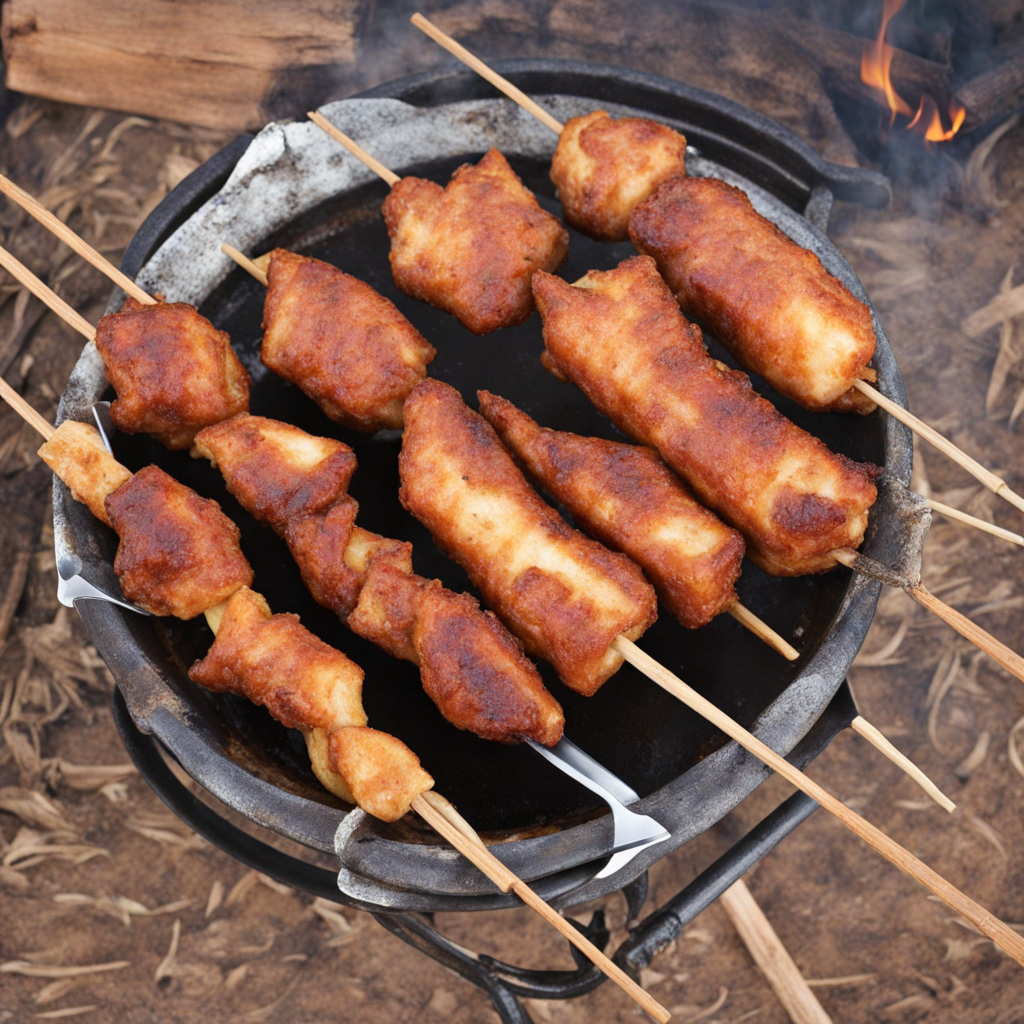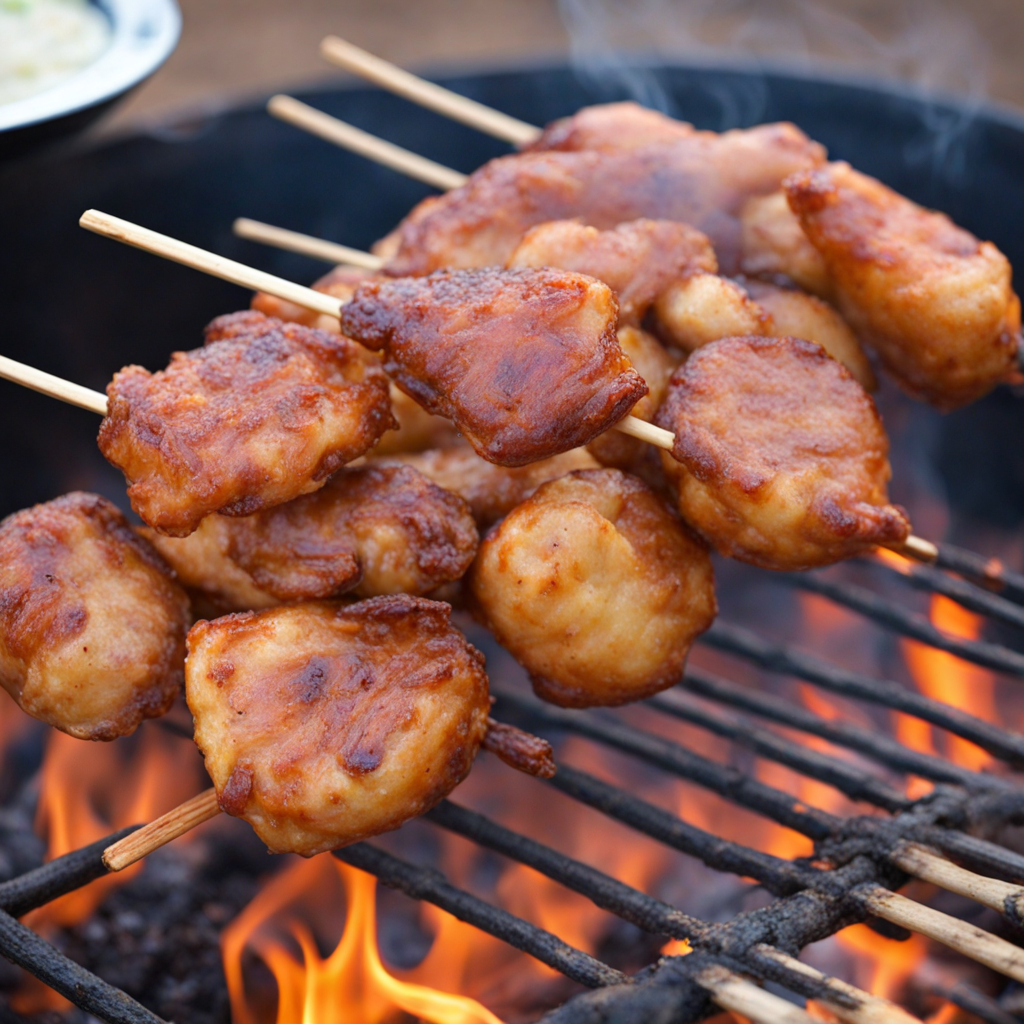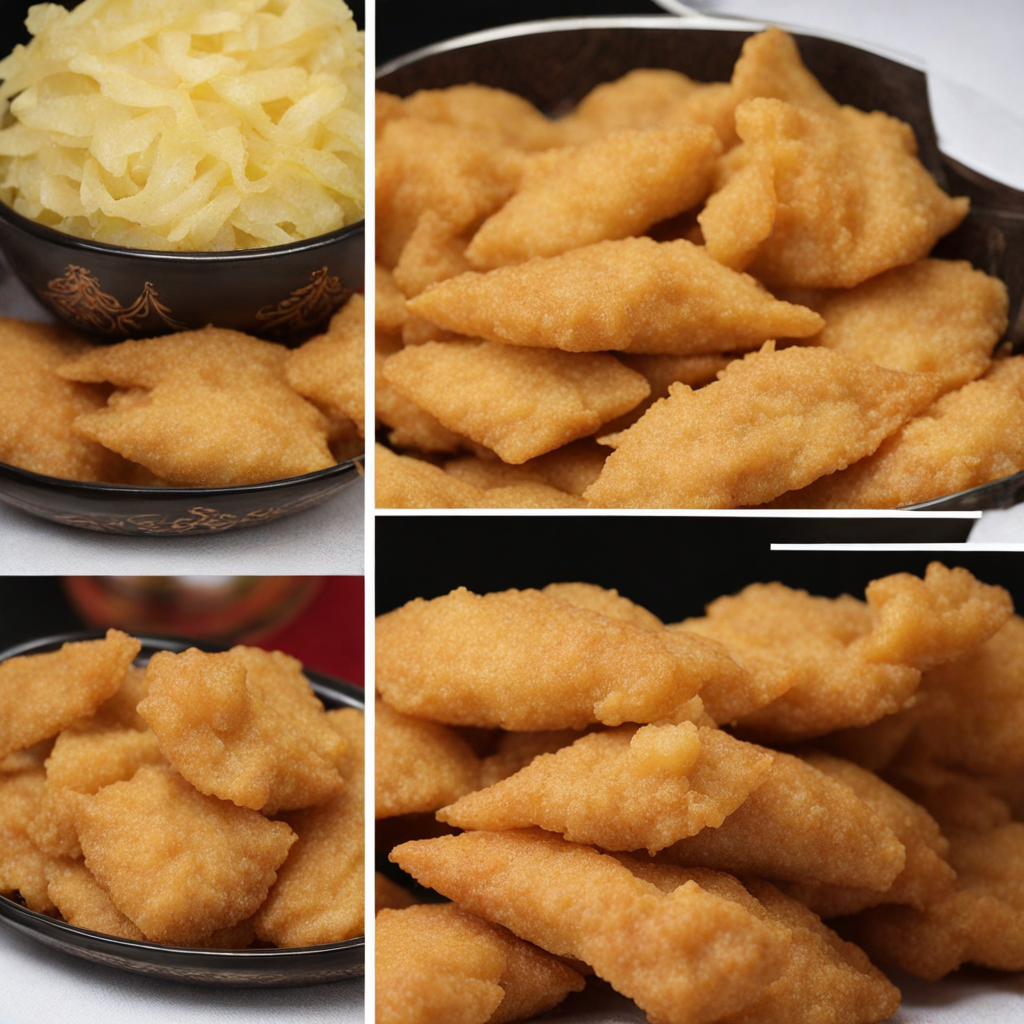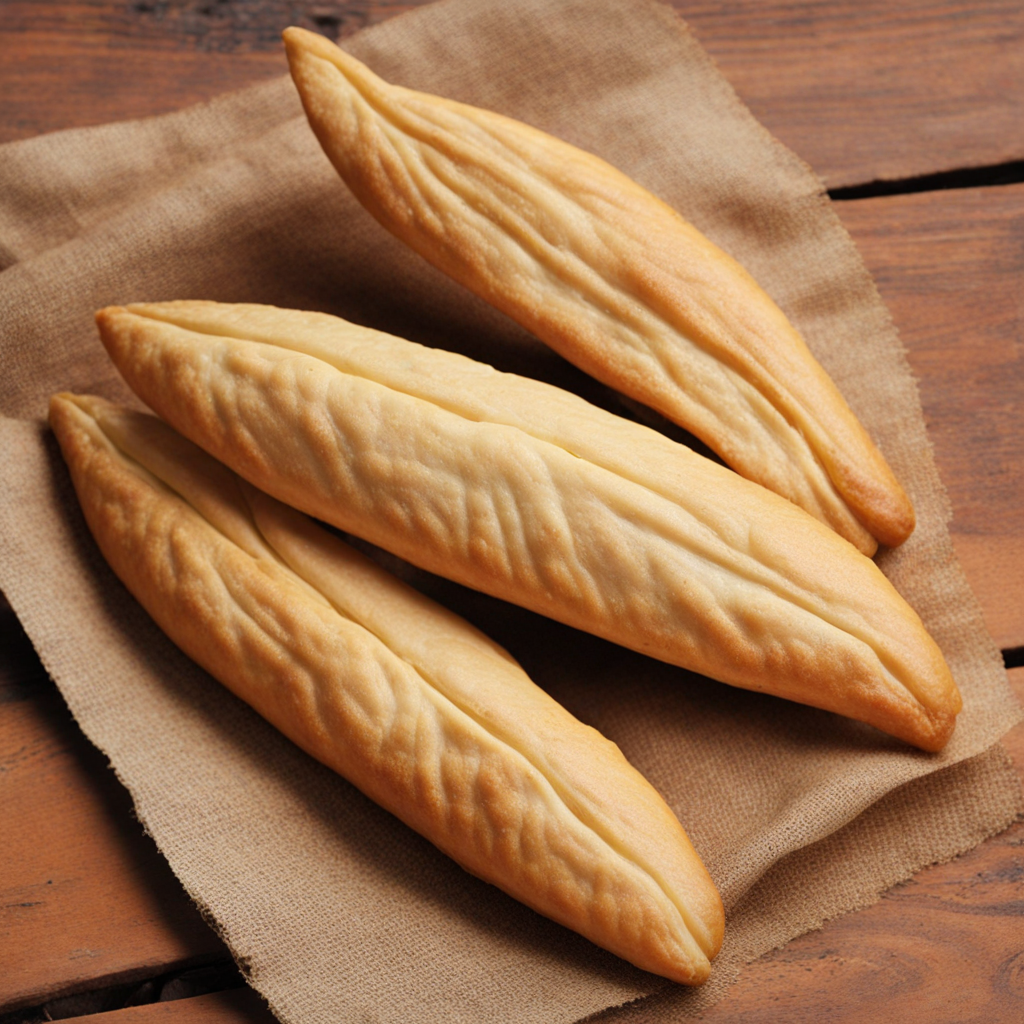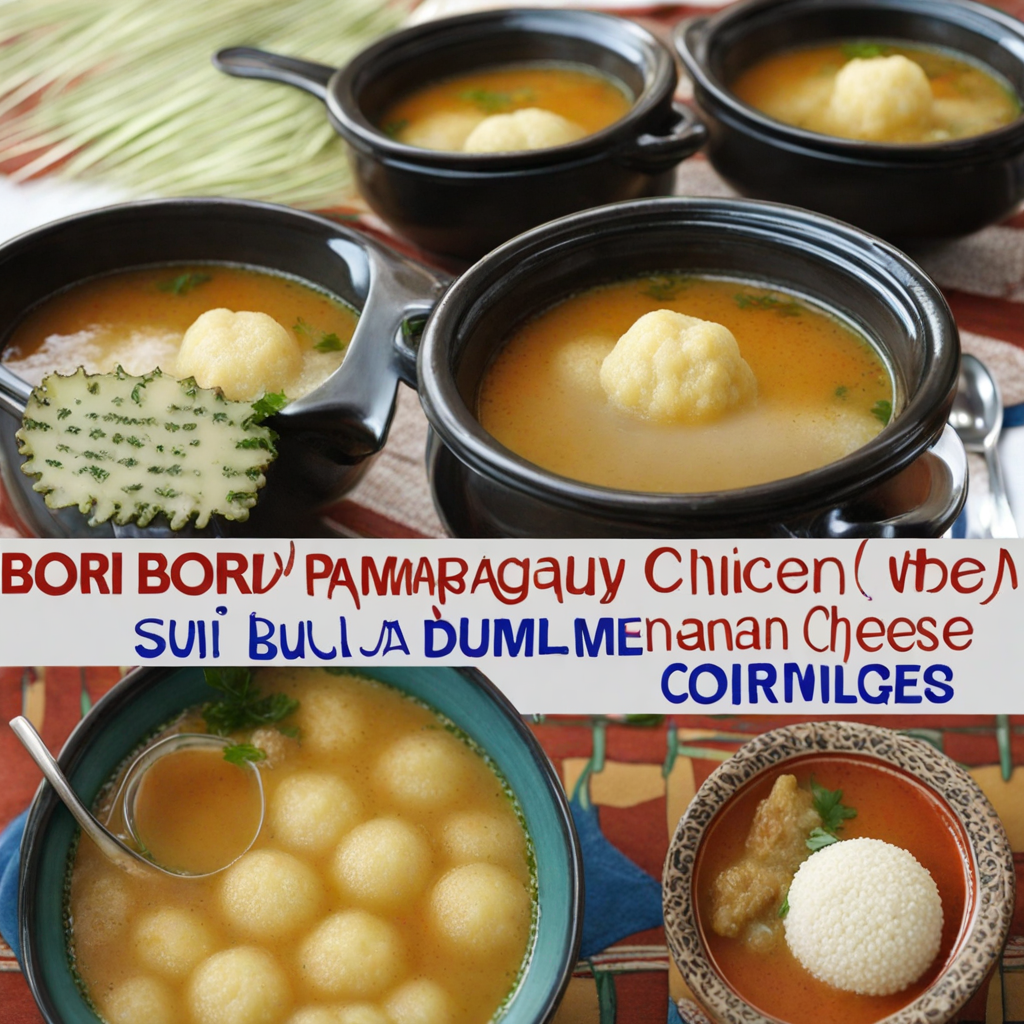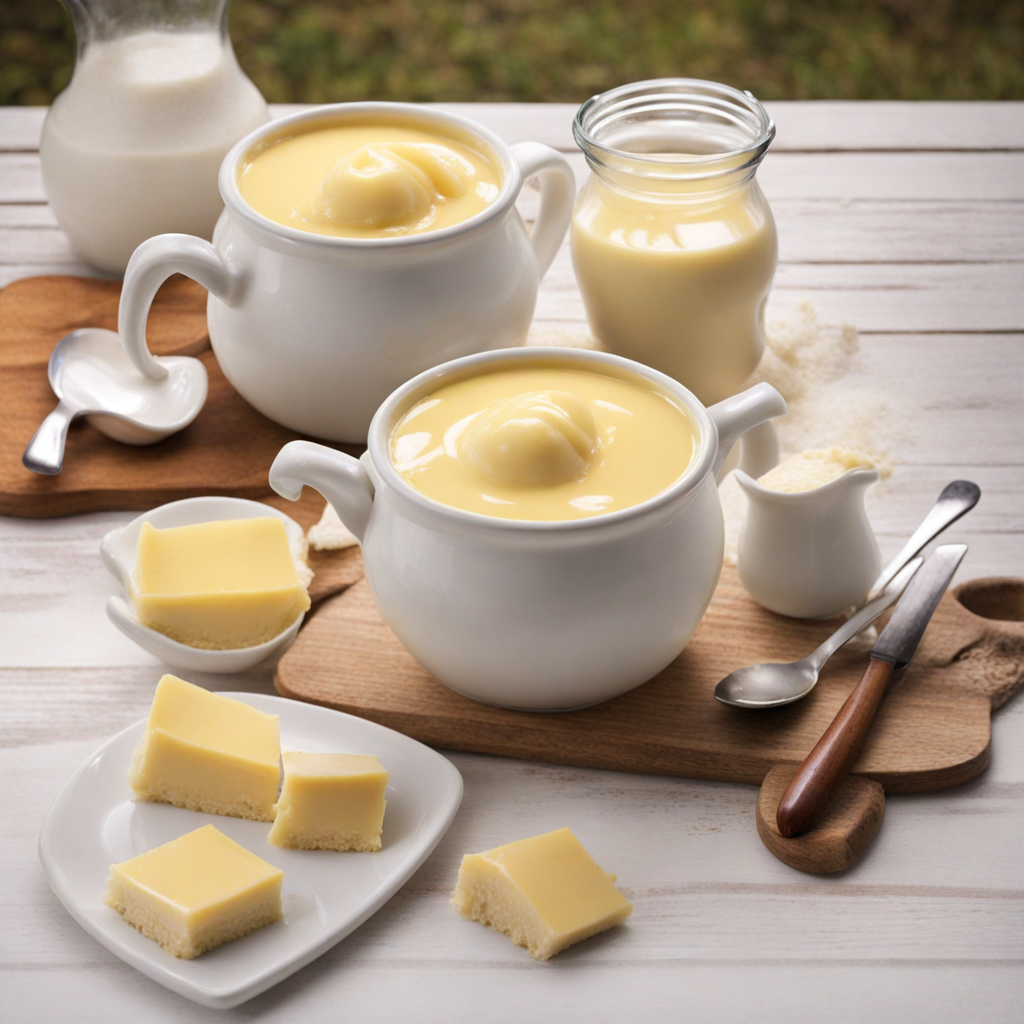Chipa Asador
Chipa Asador is a beloved traditional dish from Paraguay, embodying the country's rich culinary heritage and the influence of indigenous Guarani culture. This savory cheese bread is often prepared for special occasions, family gatherings, and festive celebrations, showcasing the communal spirit of Paraguayan dining. The dish has its origins in the ancient practices of the Guarani people, who utilized local ingredients and techniques to create nourishing and flavorful foods. Over time, it has evolved into a popular street food and a staple at barbecues, reflecting the Paraguayan love for grilled foods. The flavor profile of Chipa Asador is characterized by its delightful combination of cheese, corn flour, and an array of seasonings that create a unique taste experience. The dish is renowned for its crispy exterior, which contrasts beautifully with its soft, chewy interior. The predominant flavor comes from the use of fresh cheese, typically a local variety known as "queso Paraguay," which is creamy and mildly tangy. The addition of herbs such as parsley and sometimes anise enhances the overall flavor, giving it a distinct aromatic quality. Some variations may include ingredients like bacon or chorizo, lending a smoky richness that complements the bread's cheesy core. Preparing Chipa Asador involves a relatively straightforward process, yet it requires attention to detail to achieve the desired texture and flavor. The key ingredients include corn flour, fresh cheese, eggs, milk, and butter or oil. The corn flour serves as the base, providing a gluten-free alternative that is both
How It Became This Dish
The History of Chipa Asador: A Culinary Gem of Paraguay #### Origins Chipa Asador is more than just a culinary delight; it is a symbol of Paraguay's rich cultural tapestry, interwoven with indigenous traditions, colonial influences, and modern adaptations. The dish is a type of cheese bread that is traditionally grilled over an open flame, embodying the essence of Paraguayan cuisine. The origins of Chipa date back to the Guarani people, the indigenous inhabitants of Paraguay, who cultivated cassava (also known as manioc or yuca) long before Spanish colonization. The Guarani used cassava as a staple food, grinding it into flour to create a variety of dishes. This early form of bread-making laid the groundwork for what would eventually evolve into Chipa. When the Spanish arrived in the 16th century, they brought with them new ingredients, including wheat and dairy products like cheese. This fusion of cultures resulted in a variety of culinary practices, and the introduction of cheese into the indigenous cassava bread recipe was a significant turning point. As the local population began to integrate these new elements into their traditional cooking, the recipe for Chipa began to take shape. #### Cultural Significance Chipa Asador is deeply rooted in the social and cultural fabric of Paraguay. It is not just a food item; it is a communal experience that brings families and friends together. Traditionally, Chipa is prepared during festive occasions, religious celebrations, and family gatherings, making it a symbol of togetherness and joy. In Paraguay, Chipa Asador is often enjoyed during Holy Week, particularly on Good Friday. The preparation of the dish is a ritualistic event, where families gather to make the dough, shape the breads, and grill them over a wood fire. The communal aspect of this preparation is essential; it transforms the cooking process into a shared experience, reinforcing familial bonds and cultural heritage. Moreover, Chipa Asador has become an integral part of Paraguayan identity. It is a dish that transcends social classes, enjoyed by everyone from rural families to urban dwellers. The simplicity of its ingredients—manioc flour, cheese, eggs, and milk—belies the rich history and tradition behind it. The dish reflects the resourcefulness of the Paraguayan people, who have adapted their culinary practices over centuries, using locally available ingredients to create something delicious and meaningful. #### Development Over Time As Paraguay has evolved, so too has the preparation and consumption of Chipa Asador. Traditionally, the dough was shaped into small rings or balls and cooked over an open flame or in a clay oven, a method that imparted a unique smoky flavor to the bread. However, with the passage of time and the advent of modern cooking methods, the preparation of Chipa Asador has seen various adaptations. In the late 20th century, as urbanization increased and more people moved to cities, the traditional methods of making Chipa began to change. The introduction of electric ovens and gas grills allowed for a more convenient preparation process, making it accessible to a broader audience. While many still prefer the traditional method of grilling over an open flame for its authentic flavor, the convenience of modern equipment cannot be overlooked. In addition to changes in cooking methods, the ingredients of Chipa Asador have also evolved. While the classic recipe remains popular, variations have emerged that incorporate different types of cheese, herbs, and spices. Some modern recipes even experiment with sweet versions of Chipa, incorporating ingredients such as honey or fruits, reflecting the dynamic nature of Paraguayan cuisine. In the 21st century, Chipa Asador has gained recognition beyond Paraguay's borders, appearing in international food festivals and culinary events. Chefs and food enthusiasts worldwide are drawn to its unique flavor and cultural significance, showcasing it as a representation of Paraguay's culinary heritage. This exposure has not only elevated the dish's status but has also encouraged a new generation of cooks to explore and innovate upon traditional recipes. #### Chipa Asador in Contemporary Paraguay Today, Chipa Asador remains a beloved staple in Paraguay, enjoyed by locals and tourists alike. Street vendors and bakeries across the country offer freshly made Chipa, often served warm and accompanied by a cup of mate, a traditional herbal tea. The dish has also found its way into the homes of expatriates, allowing Paraguayans living abroad to maintain a connection to their cultural roots. Moreover, Chipa Asador has become a symbol of national pride. In 2016, Paraguay declared April 4th as the official "National Day of Chipa," celebrating the dish's importance to the nation's identity and heritage. This recognition further solidifies Chipa Asador's place in the hearts of Paraguayans and serves as a reminder of their rich culinary history. As we look to the future, Chipa Asador continues to evolve while remaining a cherished part of Paraguayan culture. It serves as a reminder of the country's indigenous roots and the adaptability of its people in the face of changing times. Whether enjoyed during a festive gathering or as a simple snack on the go, Chipa Asador encapsulates the spirit of Paraguay—warm, inviting, and full of flavor. #### Conclusion Chipa Asador is far more than just a dish; it is a rich tapestry of history, culture, and community. From its origins with the Guarani people to its modern-day adaptations, Chipa Asador represents the resilience and creativity of the Paraguayan people. As it continues to be enjoyed and celebrated, this beloved cheese bread will undoubtedly remain a cornerstone of Paraguay’s culinary identity for generations to come.
You may like
Discover local flavors from Paraguay


